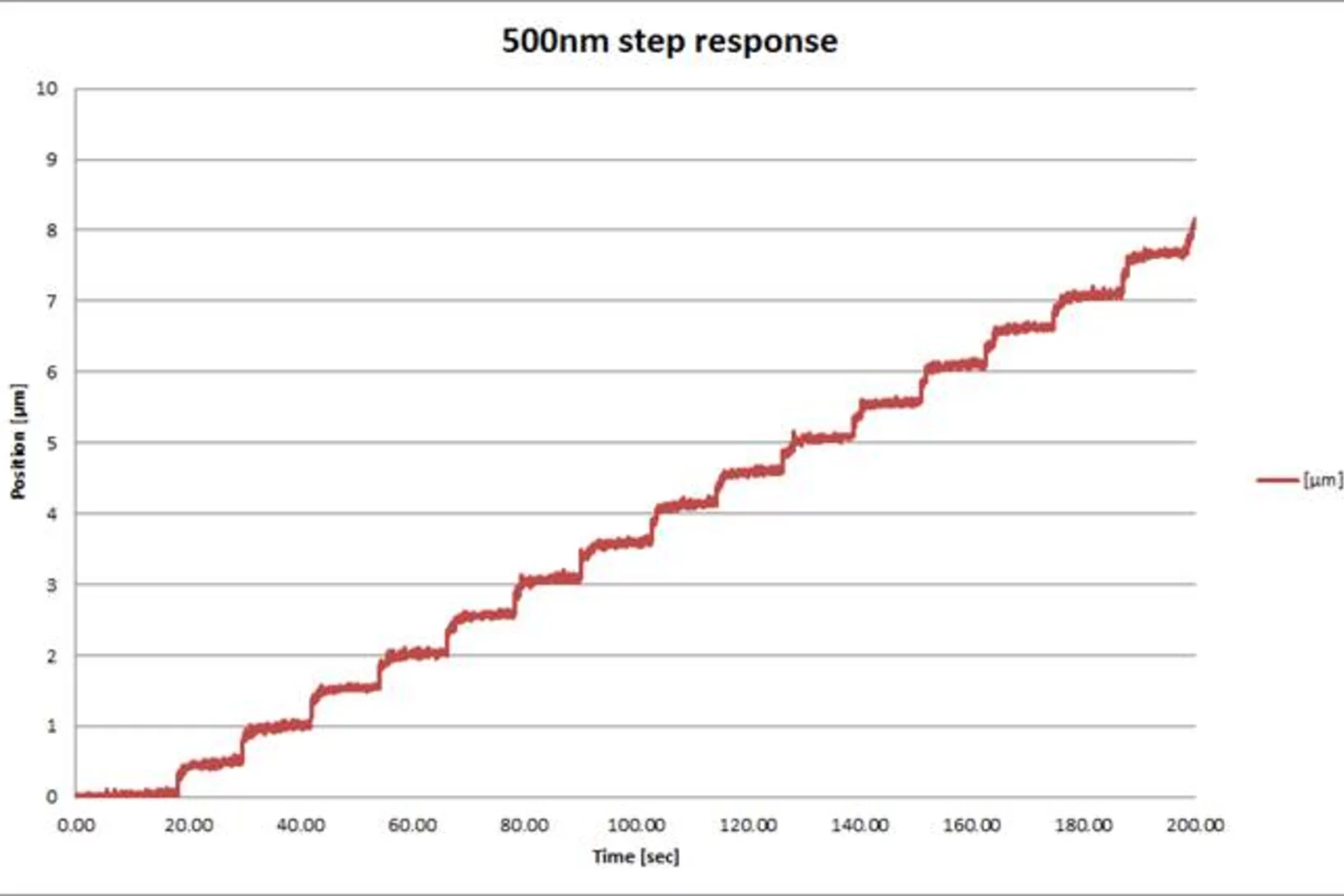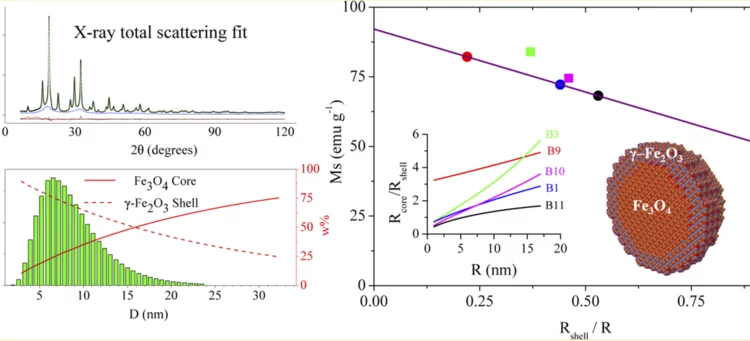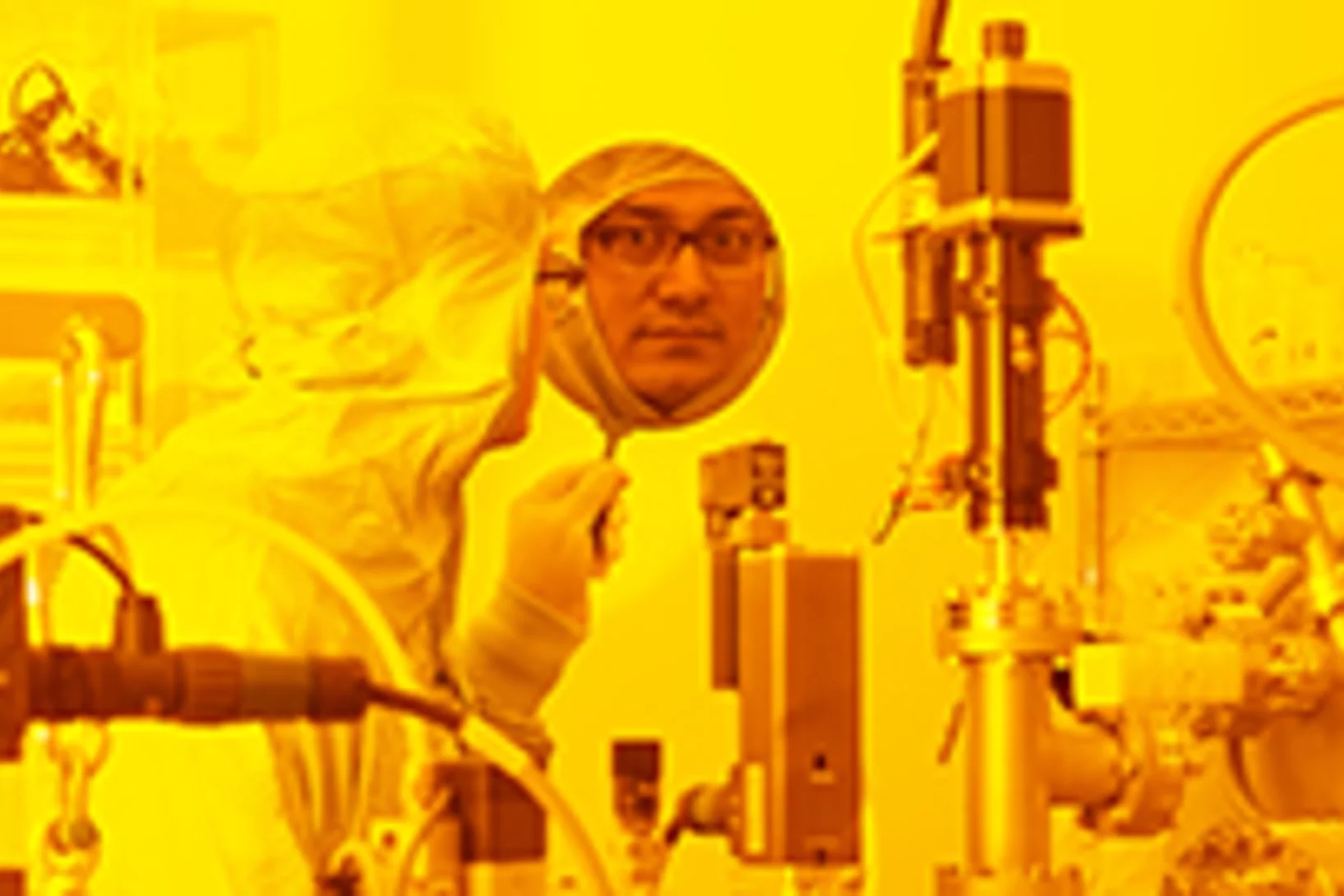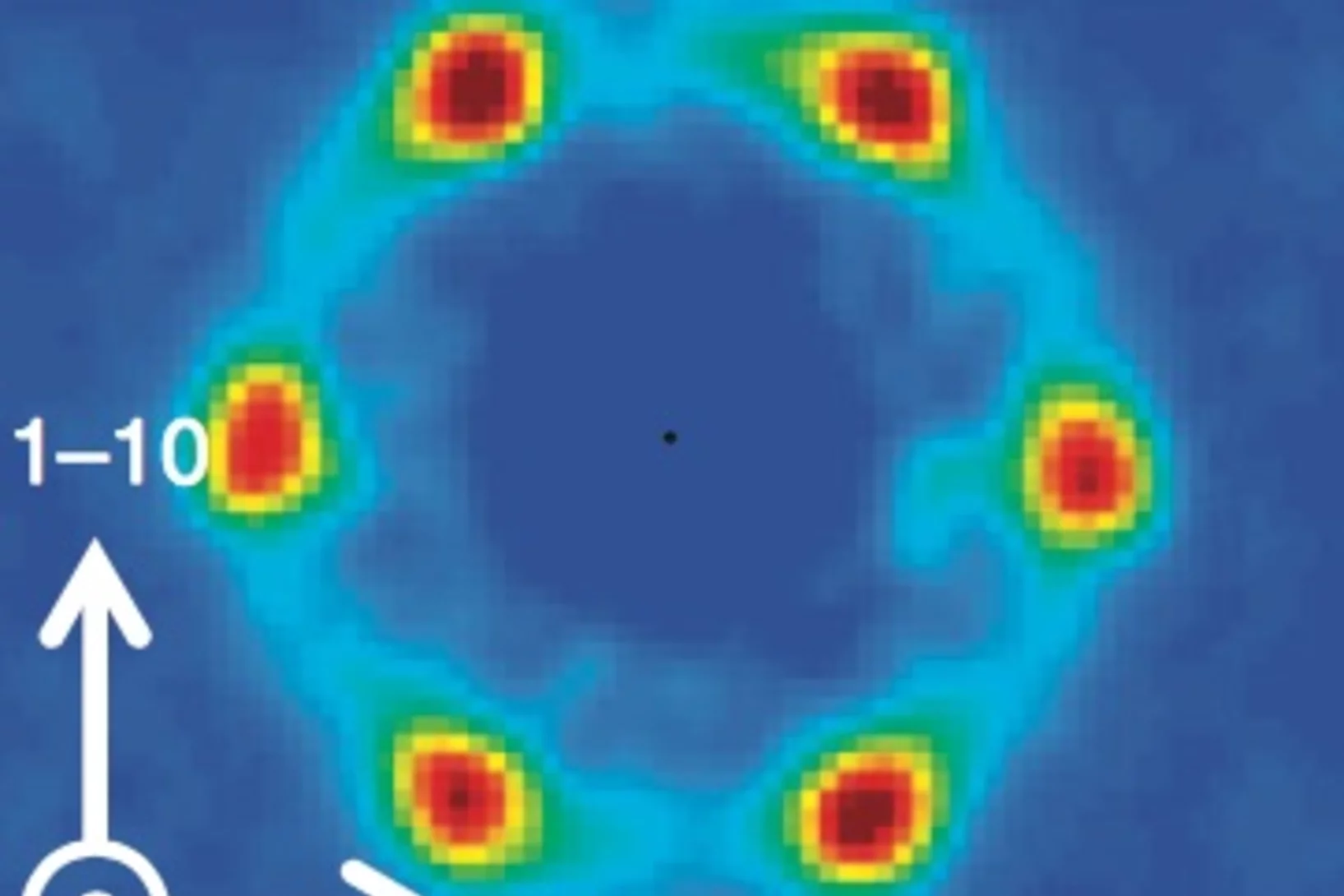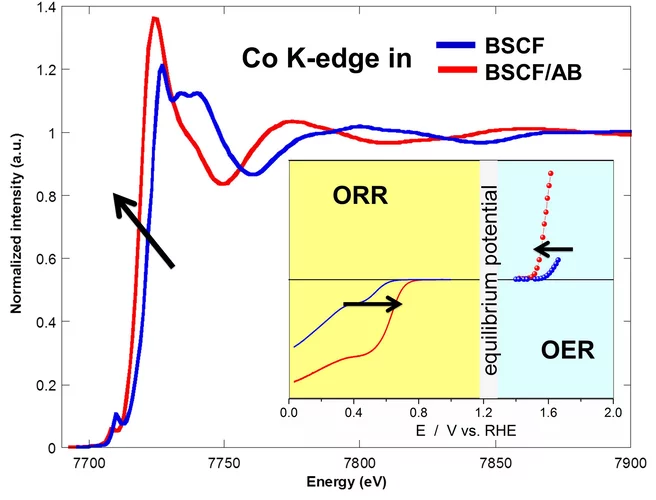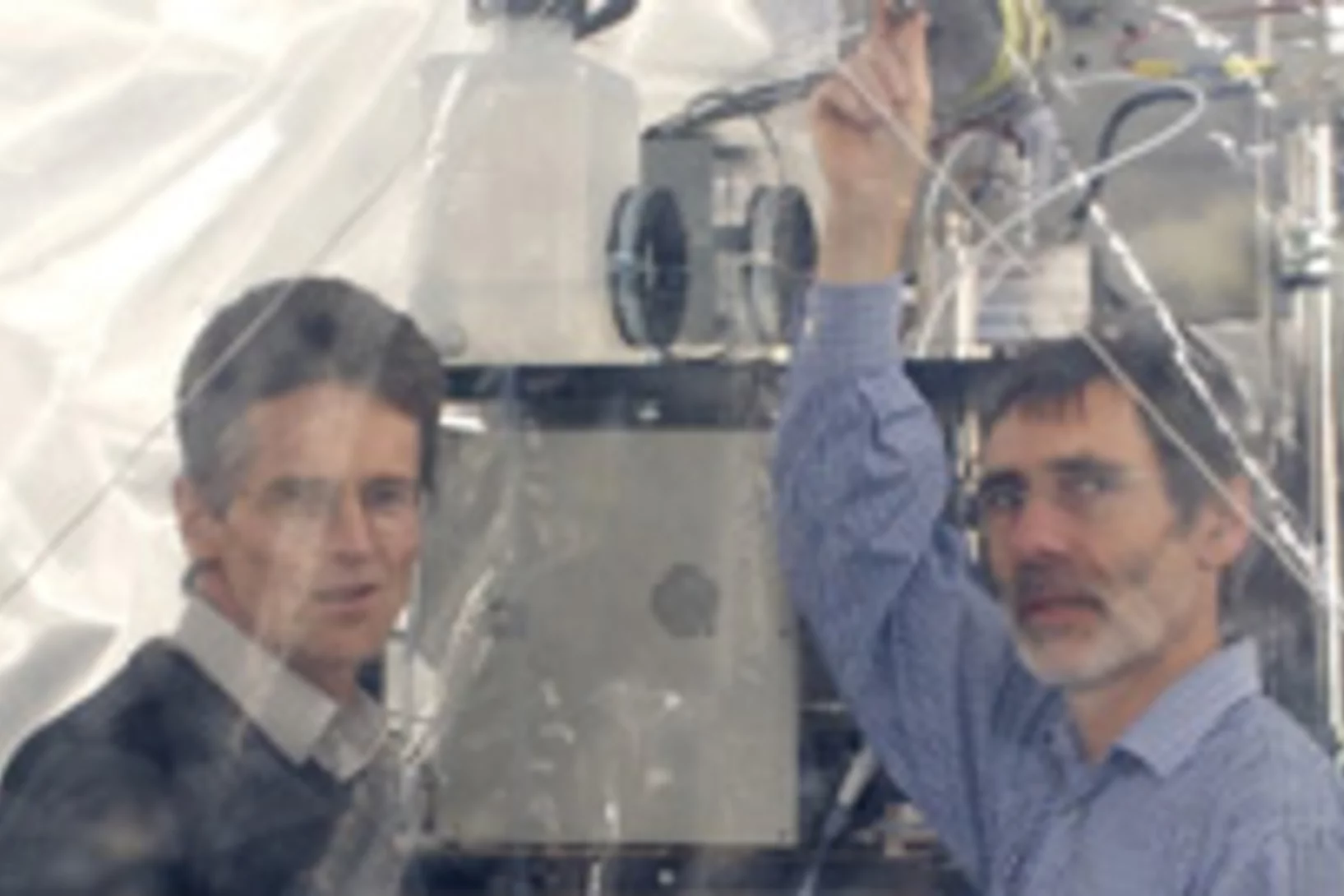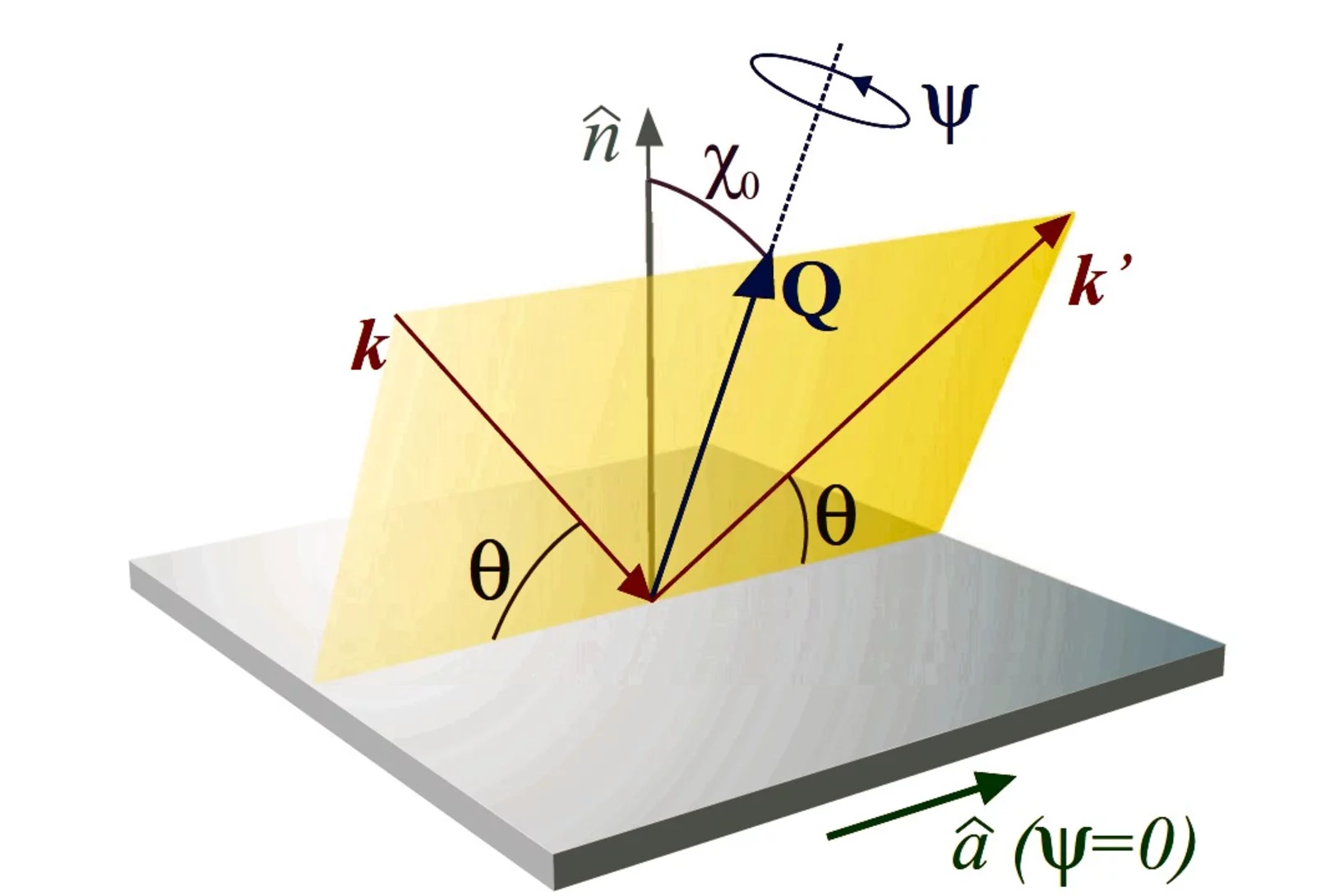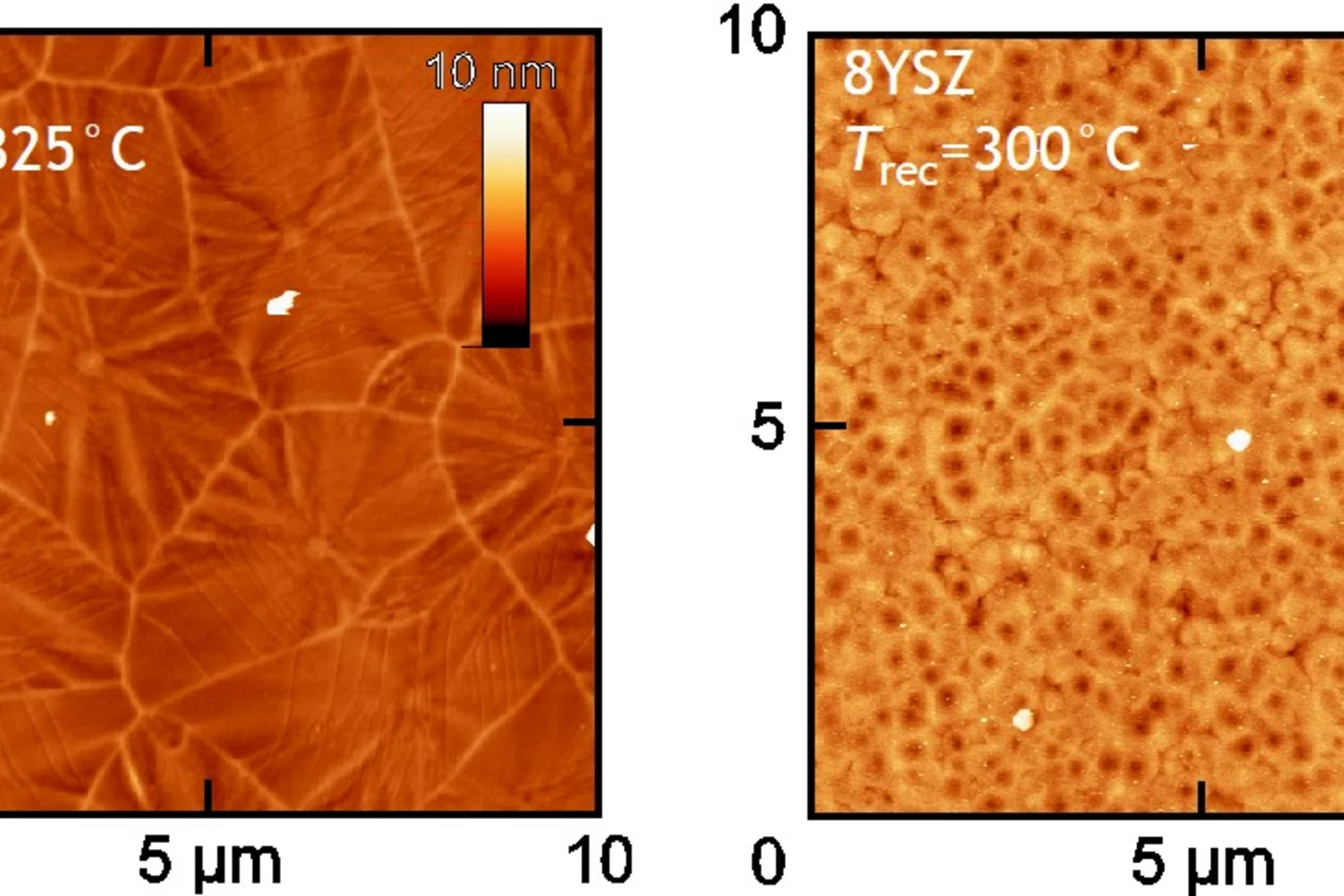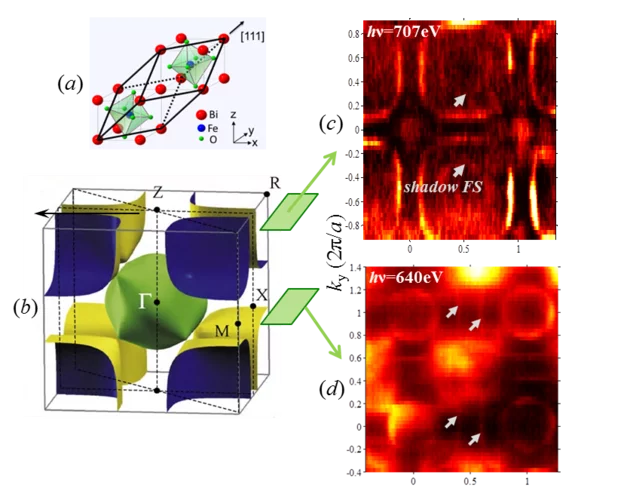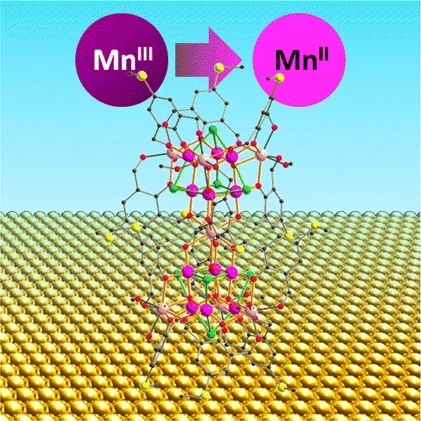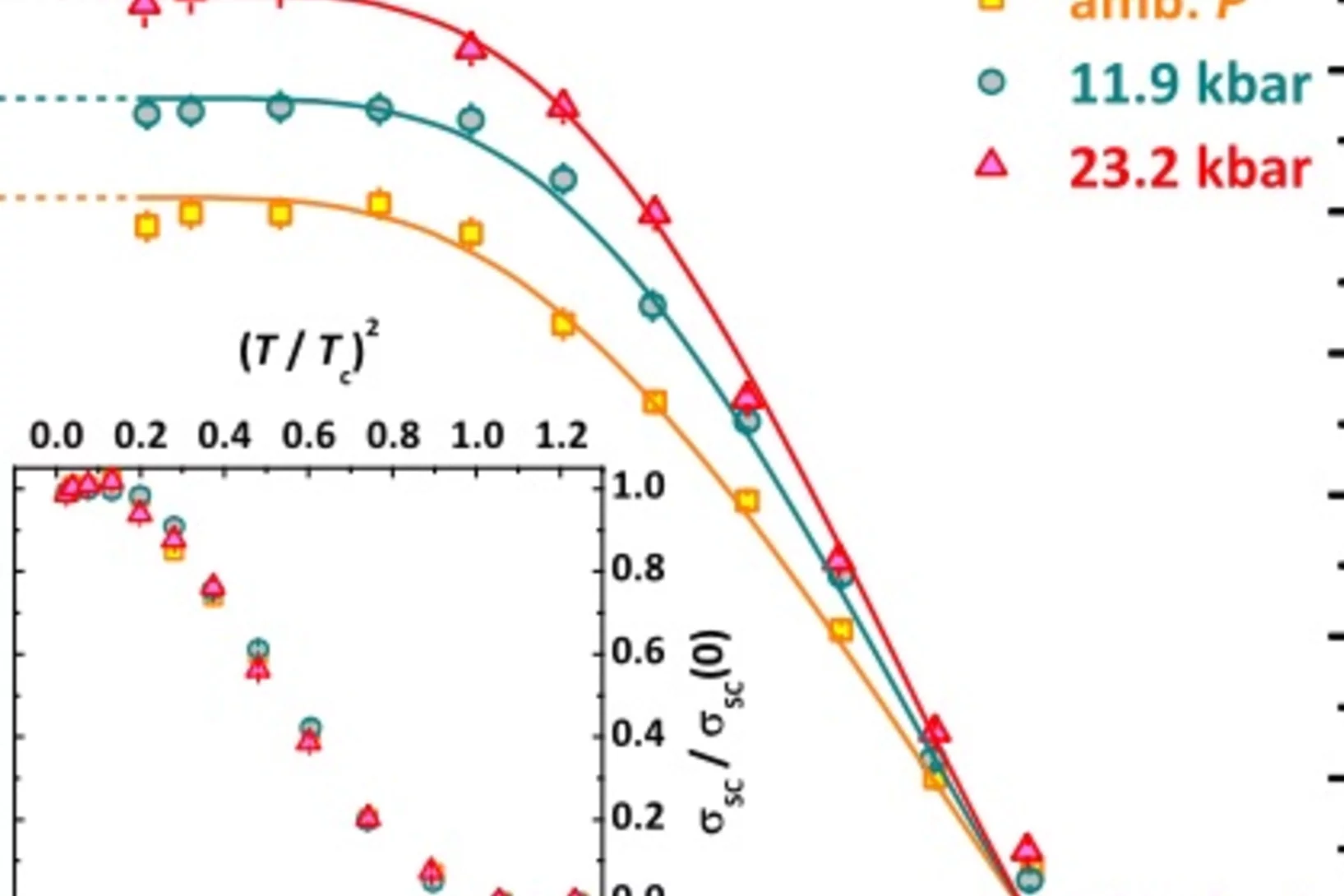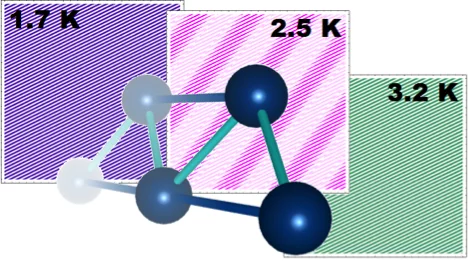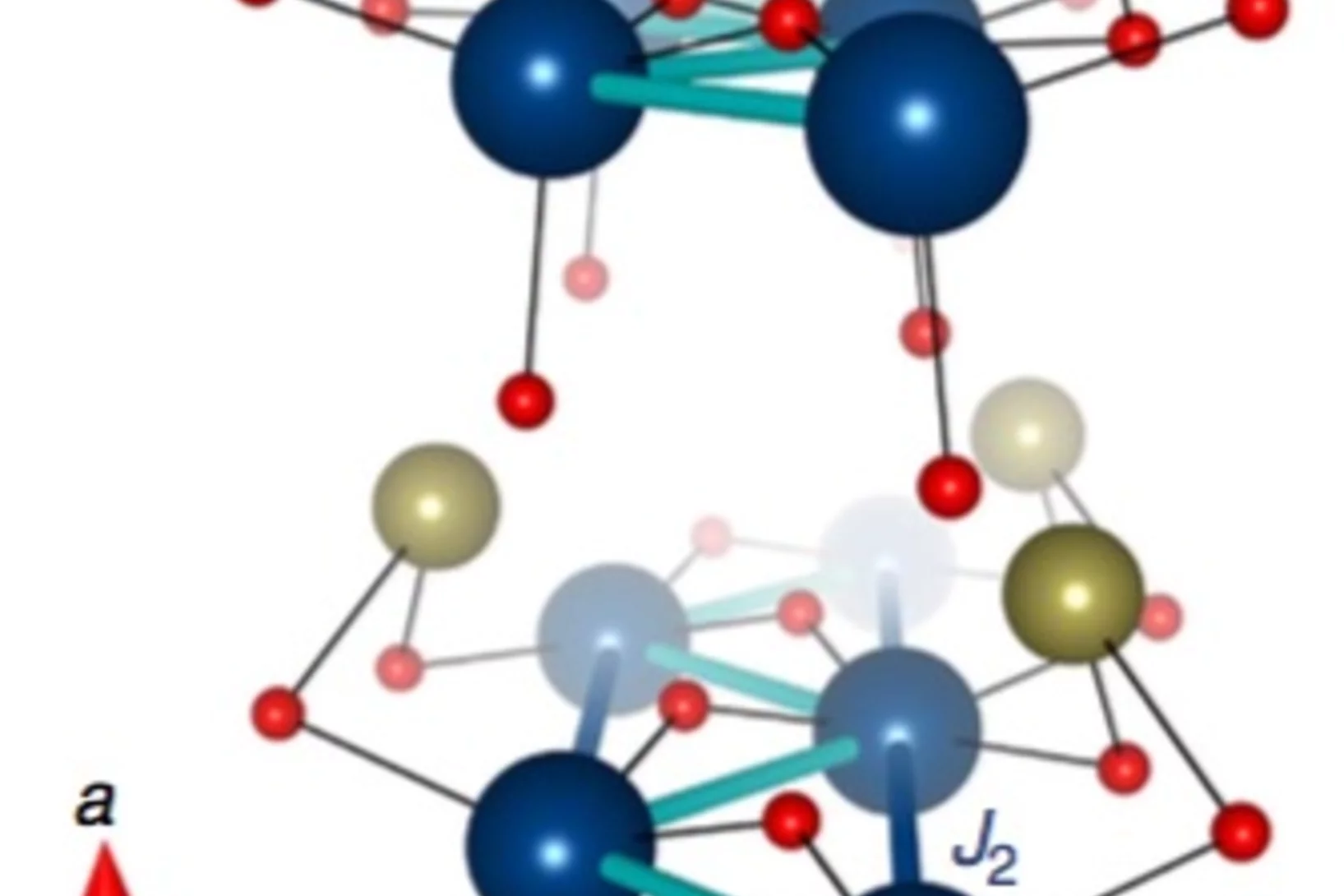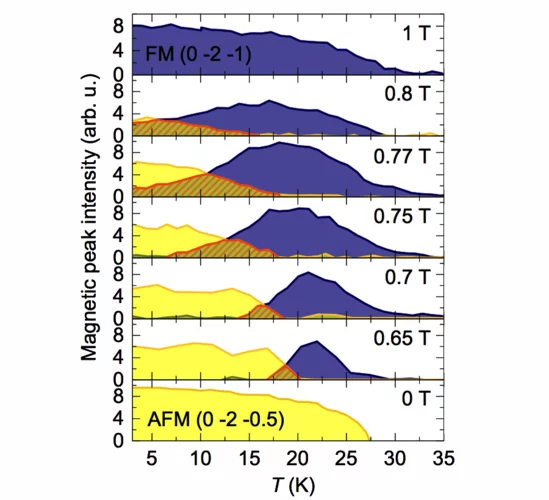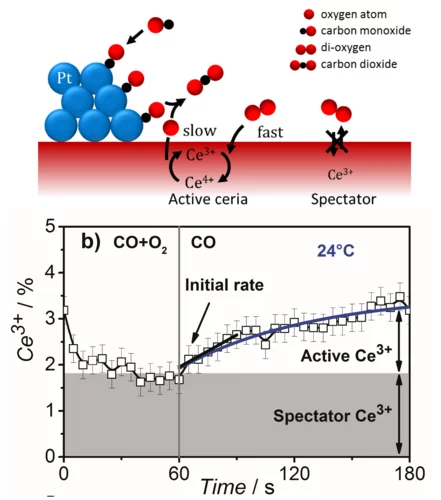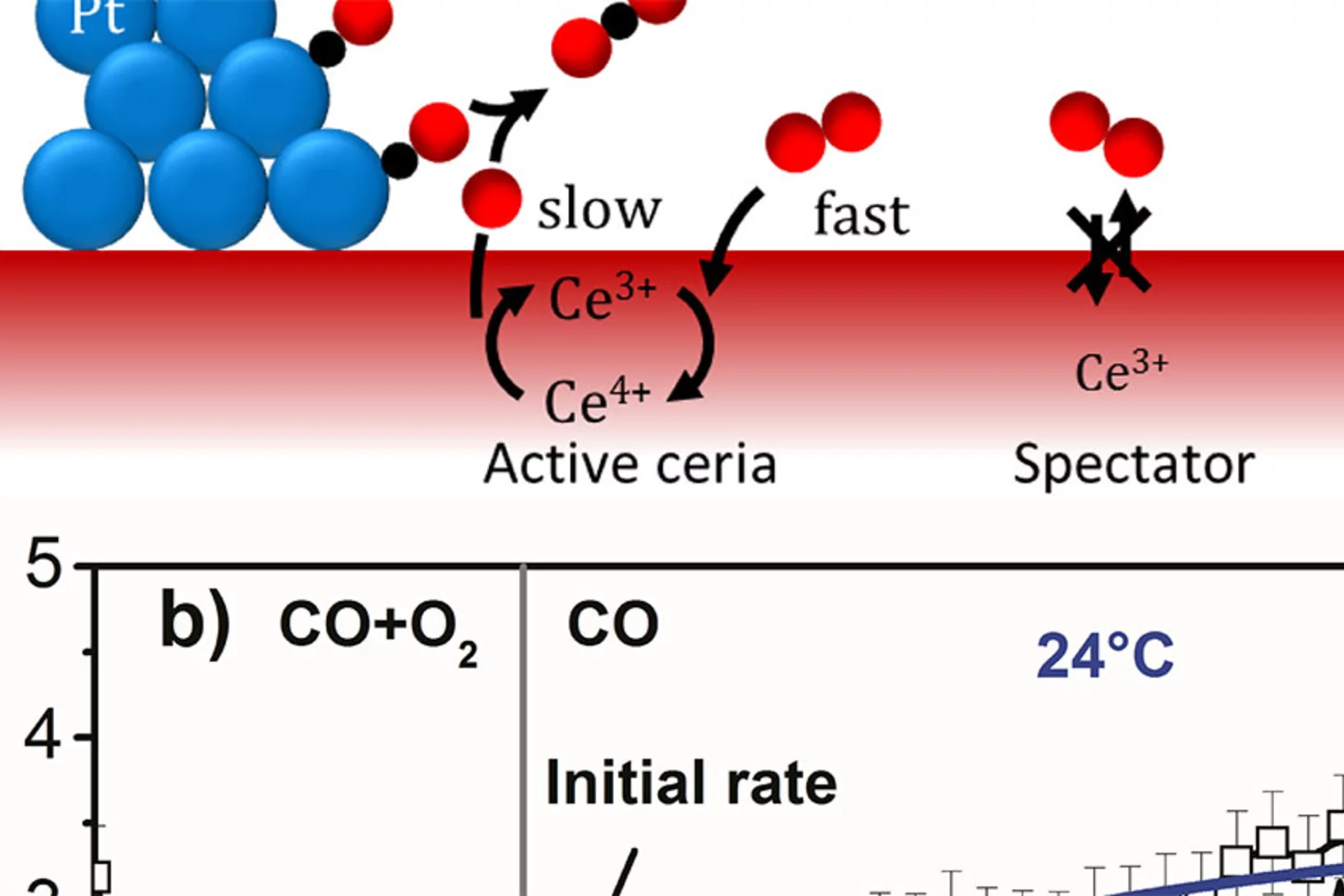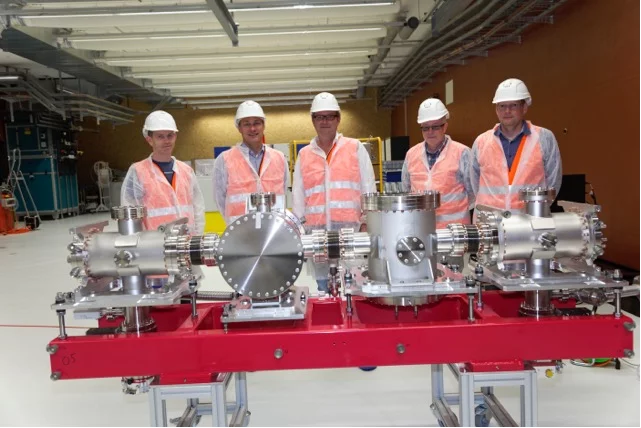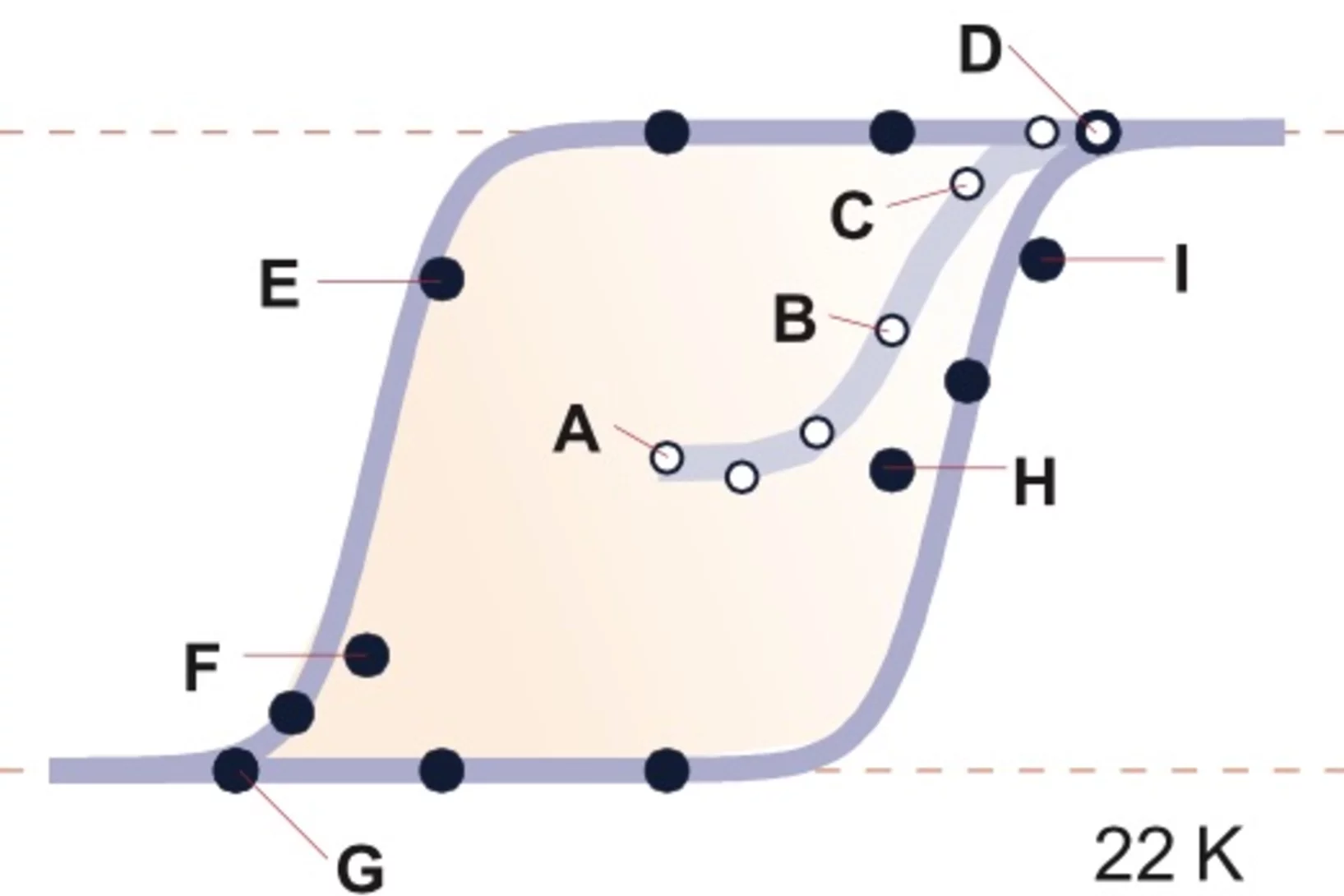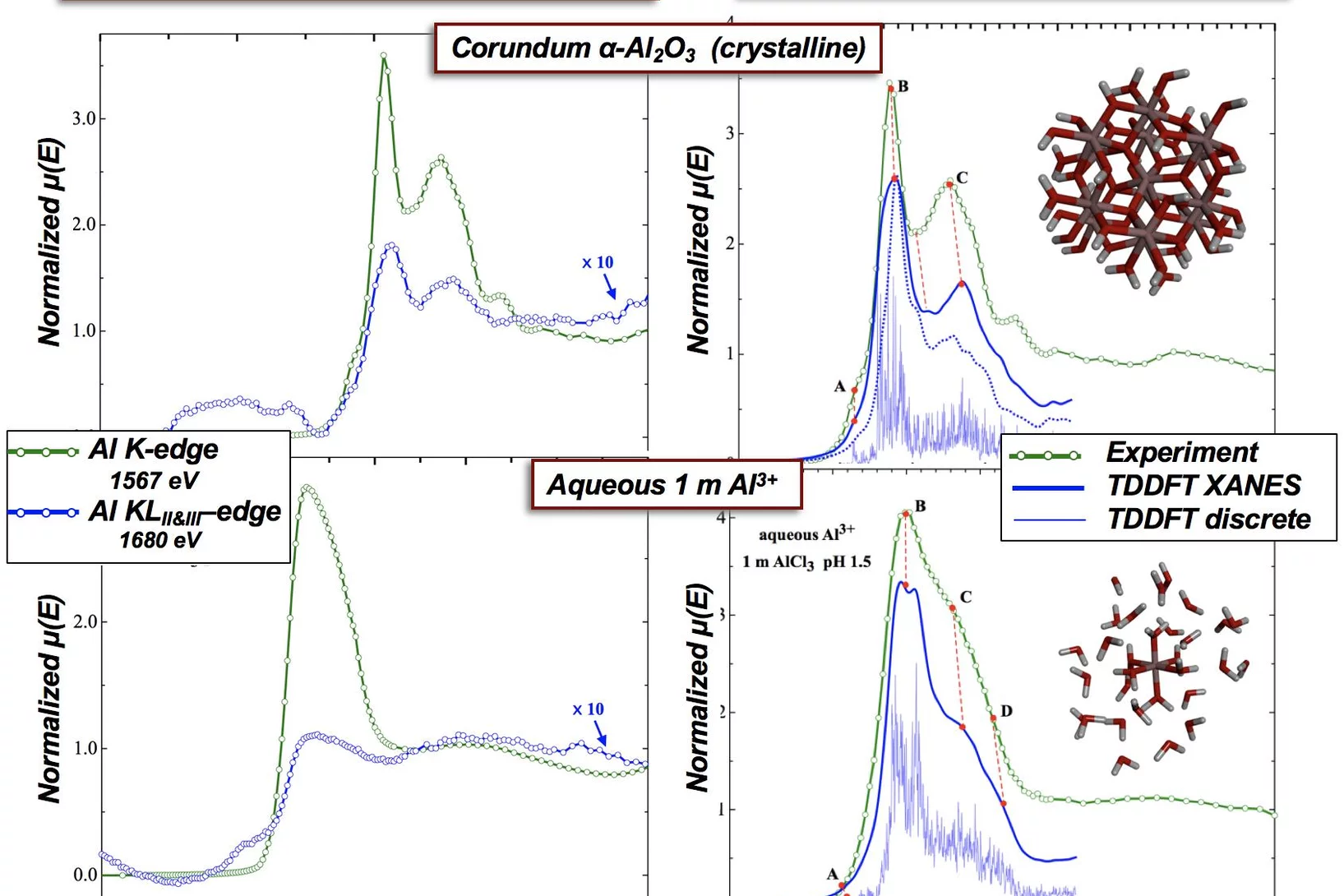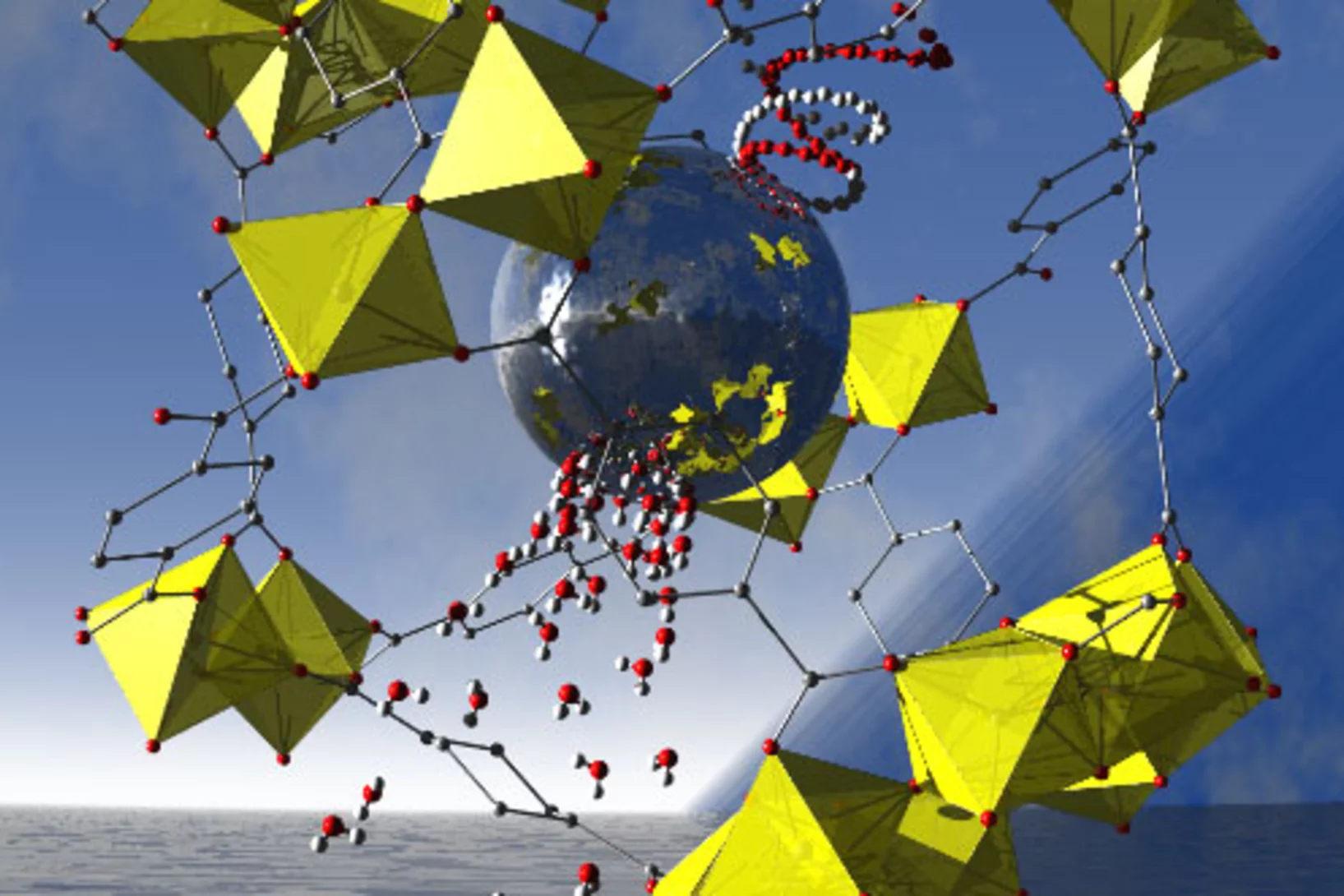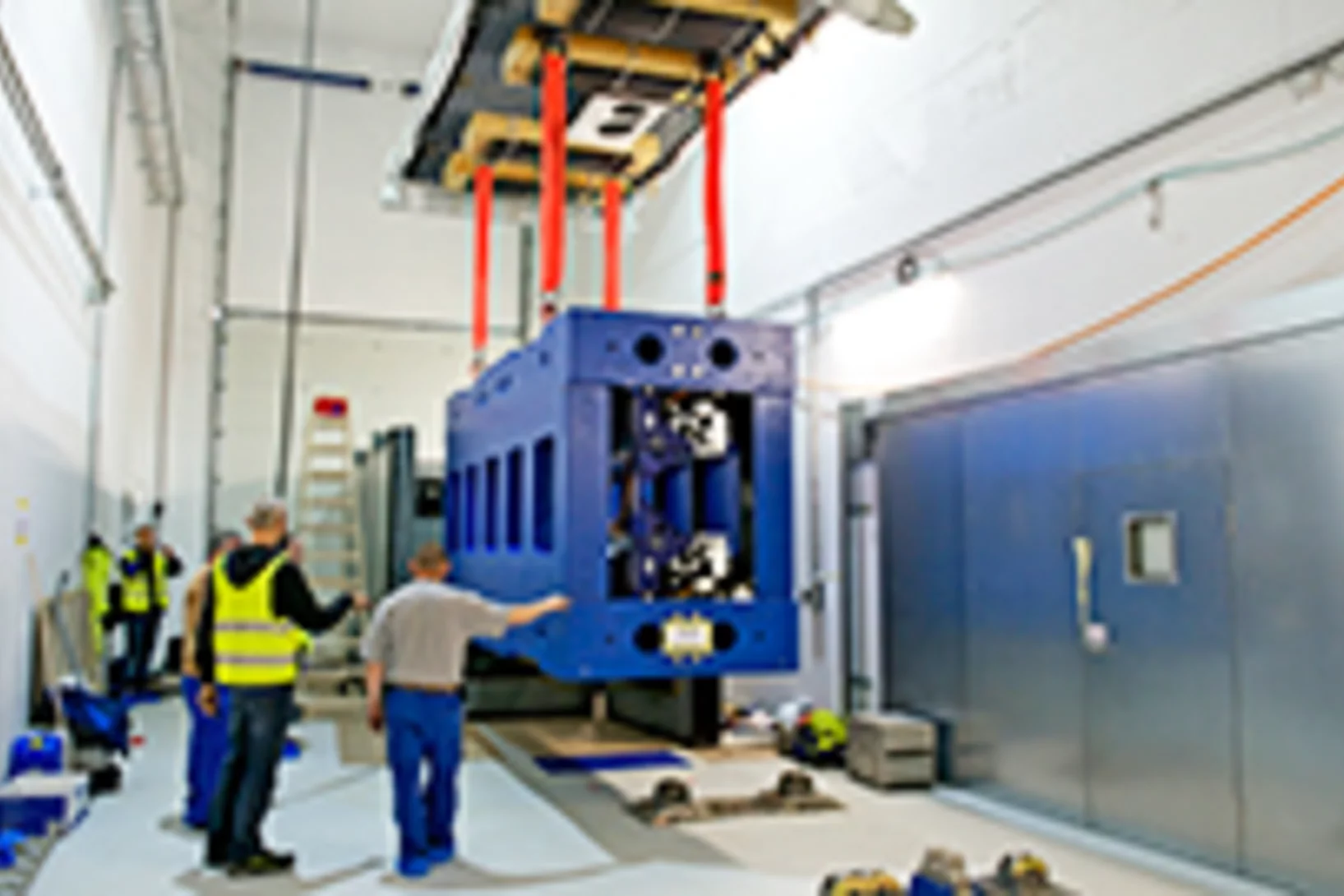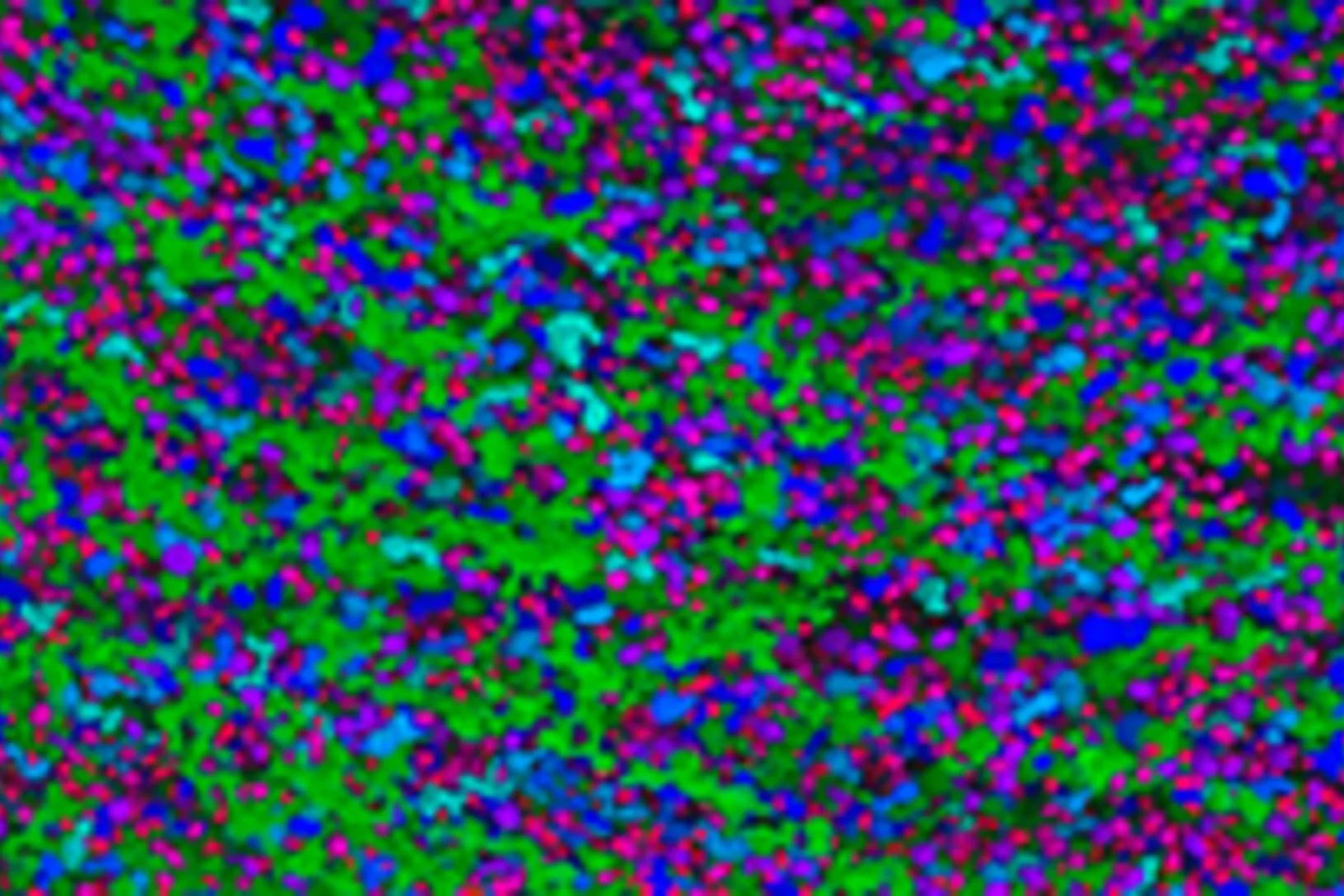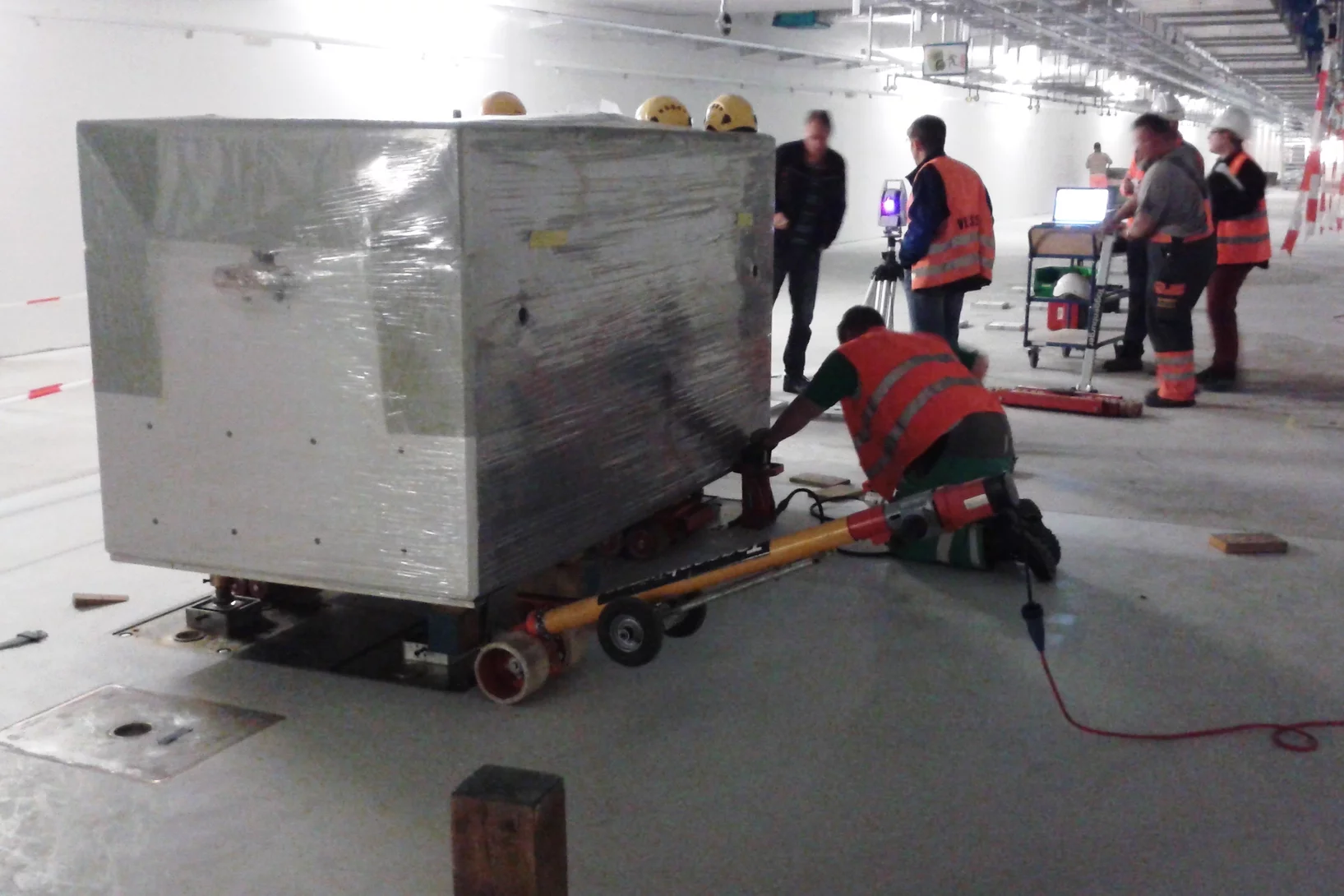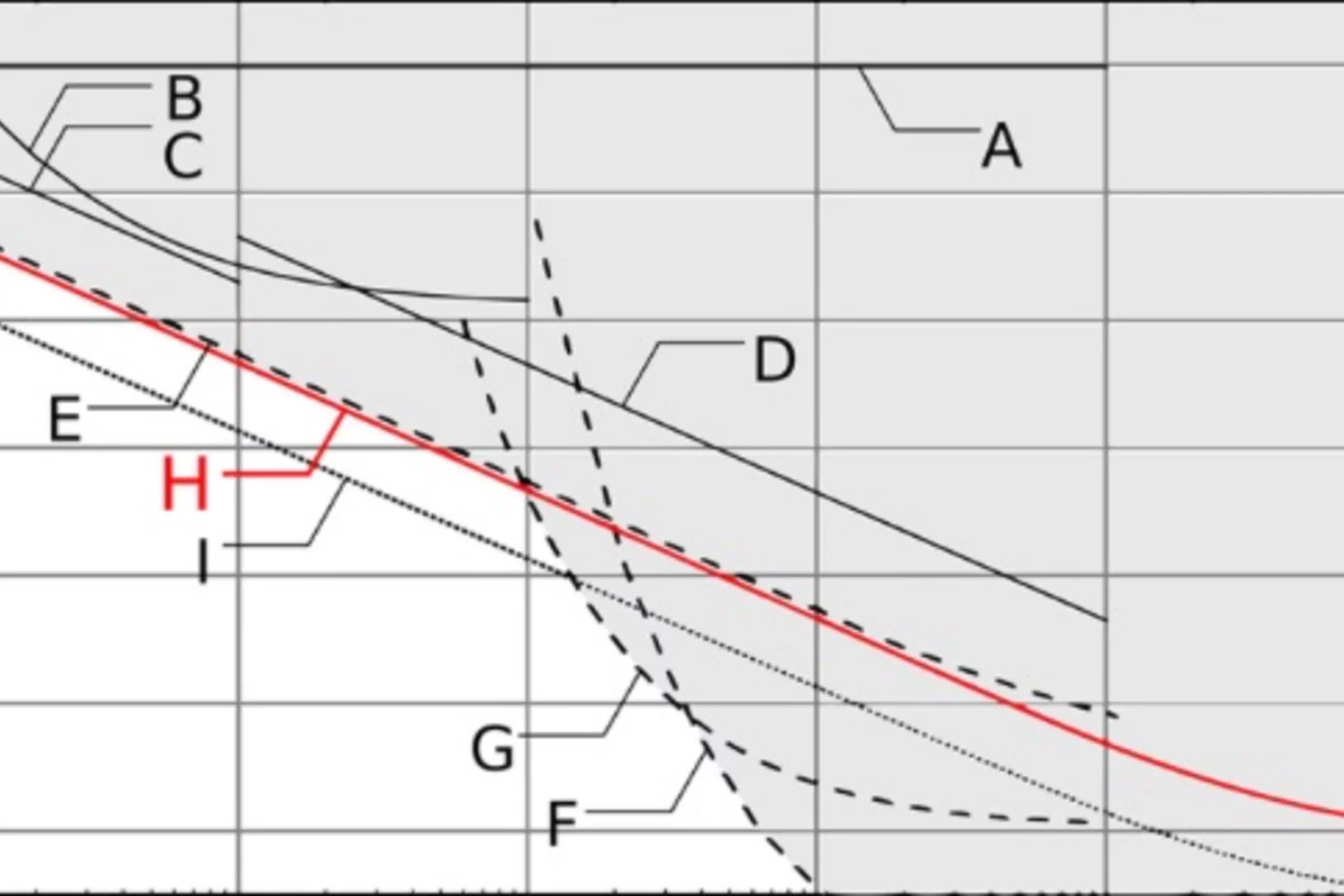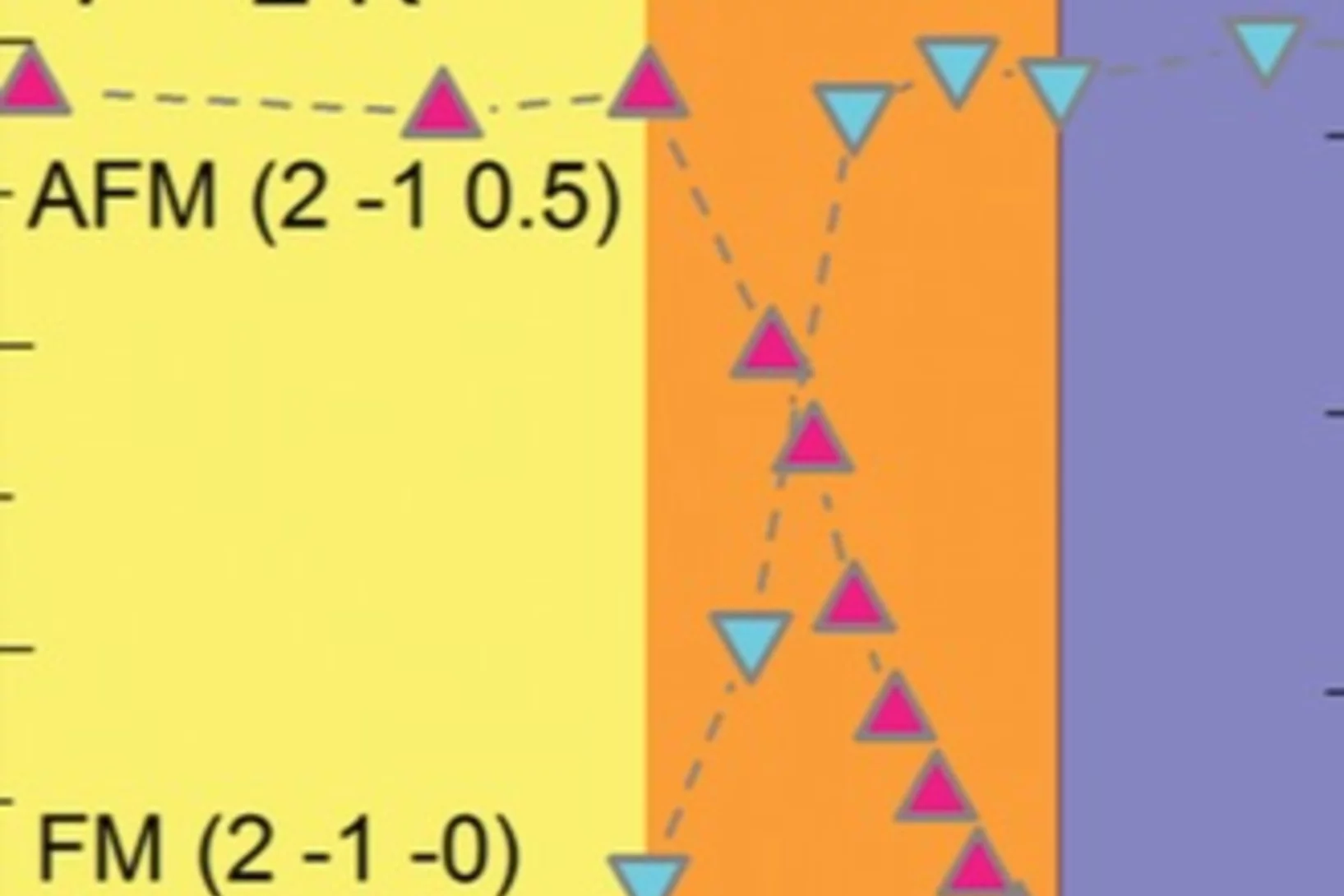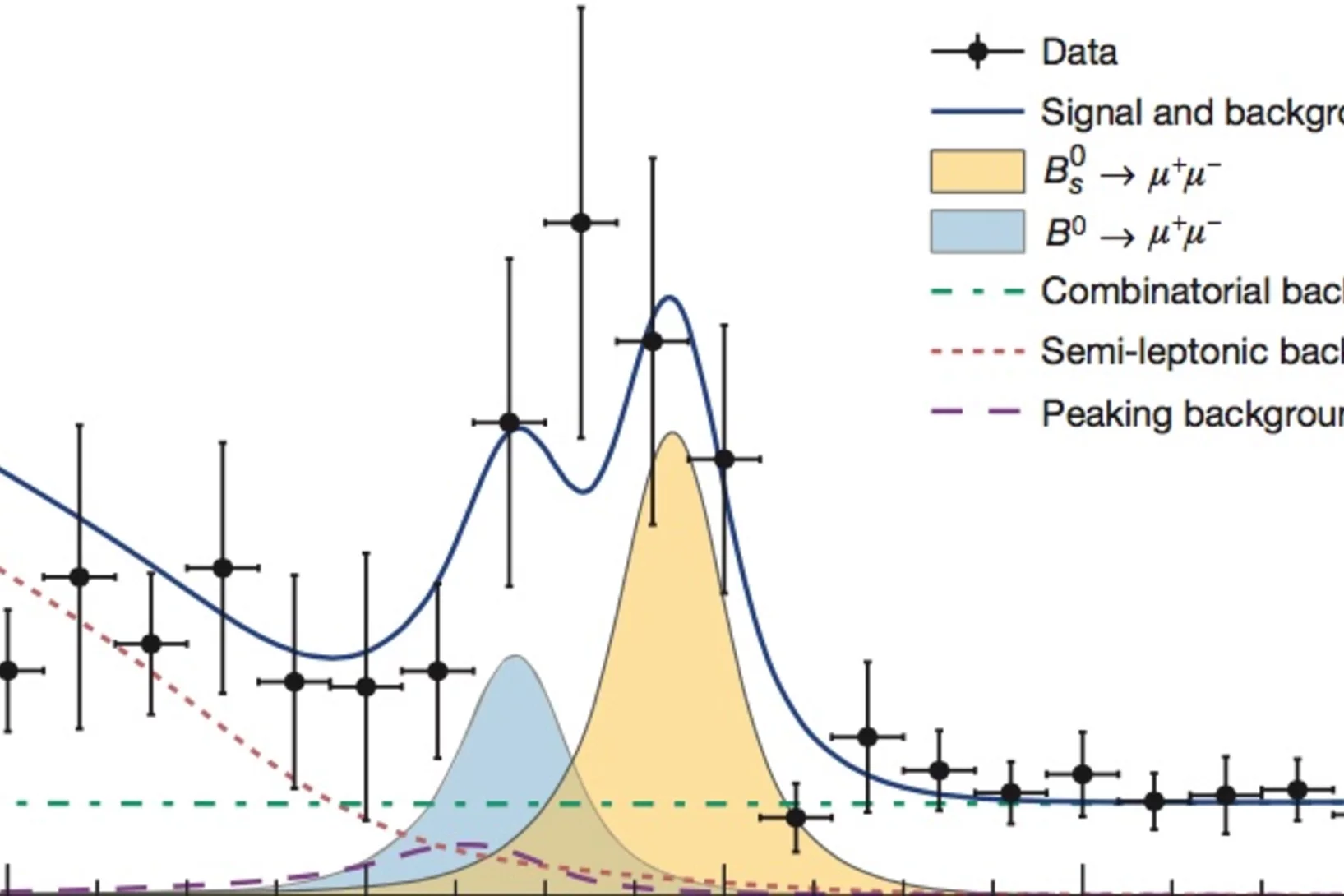Abkehr von der Kernenergie, Ausbau von Solar- und Windkraft, Energiegewinnung aus Biomasse, Senkung des Energieverbrauchs. Bis 2050 soll die Schweiz klimaneutral werden. Ein ehrgeiziges Ziel, welches durch die zunehmend herausfordernde geopolitische Lage dringlicher denn je geworden ist. Wie lässt sich in den nächsten Jahren eine nachhaltige und widerstandsfähige Energieversorgung für die Schweiz aufbauen? Wie können erneuerbare Energien optimal genutzt werden? Welche neuen Technologien sind besonders vielversprechend? Am PSI suchen Forschende nach Antworten auf diese entscheidenden Fragen.
High-Precision Vertical Linear Translation for Offset Mirrors
The horizontal and vertical offset mirrors are key optical elements for the SwissFEL ARAMIS Beamline. The offset mirrors for example, are used to deflect and steer the x-ray beam into one of the end stations. As the sample position is about 60m from the mirror, very high demands are put on the mirror positioning system in order to deflect the x-ray beam on to the sample with a micro-meter precision. Therefore precise positioning of the mirrors is required, with specifications to move a load of up to 200kg by steps as small as 0.3µm. Not just the positioning must be precise, but also the stability for short term vibrations and long term drifts must be superior.
Correlating the Core-Shell Composition and the Surface Structure to the Magnetic Properties for Magnetite-Maghemite Nanoparticles in the 5-15 nm Range
Very small superparamagnetic iron oxide nanoparticles were characterized by innovative synchrotron X-ray total scattering methods and Debye function analysis, developed at the X04SA Materials Science beamline of SLS.
Sieben Nanometer für die Elektronik der Zukunft
Forschenden des Paul Scherrer Instituts ist es gelungen, in einem Halbleitermaterial regelmässige Muster zu erzeugen, die 16 Mal kleiner sind als diejenigen heutiger Computer-Chips. Damit haben sie einen wichtigen Schritt zu noch kleineren Computerbauteilen gemacht. Strukturen dieser Grösse sieht die Industrie als Standard für das Jahr 2028 vor.
A new class of chiral materials hosting magnetic skyrmions beyond room temperature
Skyrmions, topologically protected vortex-like nanometric spin textures in magnets, have been attracting increasing attention for emergent electromagnetic responses and possible technological applications for spintronics. In particular, metallic magnets with chiral and cubic/tetragonal crystal structure may have high potential to host skyrmions that can be driven by low electrical current excitation.
Superior Bifunctional Electrocatalytic Activity of Ba0.5Sr0.5Co0.8Fe0.2O3-δ/ Carbon Composite Electrodes: Insight into the Local Electronic Structure
Using XAS it was demonstrated that carbon acts as an activity booster for Ba0.5Sr0.5Co0.8Fe0.2O3 oxygen reduction and evolution electrocatalyst promoting change of cobalt oxidation state.
Feinstaub aus modernen Benzinmotoren schadet unserer Lunge
Studien belegen seit Jahren, dass Feinstaub aus Benzinmotoren zu Gesundheitsschäden führt. Auch moderne Motorentechnologie bietet da keine Abhilfe, wie Forschende der Universität Bern und des Paul Scherrer Instituts PSI zeigen.
Interplay between magnetic order at Mn and Tm sites alongside the structural distortion in multiferroic films of o-TmMnO3
We employ resonant soft x-ray diffraction to individually study the magnetic ordering of the Mn and the Tm sublattices in single-crystalline films of orthorhombic (o−)TmMnO3. The same magnetic ordering wave vector of (0q0) with q≈0.46 is found for both ionic species, suggesting that the familiar antiferromagnetic order of the Mn ions induces a magnetic order on the Tm unpaired 4f electrons.
Crystallization of zirconia based thin films
In pulsed laser deposition the use of a rectangular or elliptical beam spot with a non 1:1 aspect ratio leads to the so called flip-over effect. Here, the longest dimension of the laser spot results in the shortest direction of plasma plume expansion.
Concept of a multichannel spin-resolving electron analyzer based on Mott scattering
The spin of electron plays a crucial role in many physical phenomena, ranging from the obvious example of magnetism, via novel materials for spintronics applications, to high-temperature superconductivity. Spin- and angle-resolved photoelectron spectroscopy (SARPES) gives the most direct access to the spin aspects of the electronic structure, but the one-channel detection principle of all presently available SARPES spectrometers severely limits their efficiency. A team of Swiss and Russian scientists has developed a revolutionary concept of a multichannel electron spin detector based on Mott scattering as the spin selective process and imaging-type electron optics.
Fermi Surface of Three-Dimensional La1−xSrxMnO3 Explored by Soft-X-Ray ARPES: Rhombohedral Lattice Distortion and its Effect on Magnetoresistance
A research team led by scientists from the Swiss Light Source has for the first time established three-dimensional (3D) electronic structure of the perovskite compound La1−xSrxMnO3 connected with its colossal magnetoresistance. Instrumental for this study has been the use of the new experimental technique of soft-x-ray ARPES, available at the ADRESS beamline, with its intrinsically sharp definition of 3D electron momentum.
Reduction of Mn19 Coordination Clusters on a Gold Surface
The surface-induced changes of the oxidation state and magnetic properties of Mn ion clusters have been probed by X-ray absorption spectroscopy and X-ray magnetic circular dichroism.
Mutual Independence of Critical Temperature and Superfluid Density under Pressure in Optimally Electron-Doped Superconducting LaFeAsO1−xFx
The superconducting properties of LaFeAsO1−xFx under conditions of optimal electron doping are investigated upon the application of external pressure up to ∼23 kbar. Measurements of muon-spin spectroscopy and dc magnetometry evidence a clear mutual independence between the critical temperature Tc and the low-temperature saturation value for the ratio ns/m* (superfluid density over effective band mass of Cooper pairs).
Spin-stripe phase in a frustrated zigzag spin-1/2 chain
In strongly correlated electron systems periodic modulations on the nano-scale have typically been associated with competition between short- and long-range interactions, for example, between exchange and dipole-dipole interactions in the case of ferromagnetic thin films. Here we show that spin-stripe textures may develop also in antiferromagnets, where long-range dipole-dipole magnetic interactions are absent.
Spin-stripe phase in a frustrated zigzag spin-1/2 chain
Motifs of periodic modulations are encountered in a variety of natural systems, where at least two rival states are present. In strongly correlated electron systems, such behaviour has typically been associated with competition between short- and long-range interactions, for example, between exchange and dipole-dipole interactions in the case of ferromagnetic thin films.
Controllable Broadband Absorption in the Mixed Phase of Metamagnets
Combination of neutron scattering, muon spin relaxation, specific heat, ac and dc magnetization measurements, and electron magnetic resonance, reveals the ability of metamagnetic materials to absorb the electromagnetic radiation in an extremely broad frequency range.
Catalytically Active and Spectator Ce3+ in Ceria-Supported Metal Catalysts
Using time-resolved resonant X-ray emission spectroscopy, we quantitatively correlated the initial rate of Ce3+ formation under transient conditions to the overall rate of CO oxidation under steady-state conditions and showed that ceria reduction is a kinetically relevant step in CO oxidation, whereas a fraction of Ce3+ was present as spectators.
Catalytically Active and Spectator Ce3+ in Ceria-Supported Metal Catalysts
Identification of active species and the rate-determining reaction steps are crucial for optimizing the performance of oxygen-storage materials, which play an important role in catalysts lowering automotive emissions, as electrode materials for fuel cells, and as antioxidants in biomedicine. We demonstrated that active Ce3+ species in a ceria-supported platinum catalyst during CO oxidation are short-lived and therefore cannot be observed under steady-state conditions.
PSI-DESY Collaboration Delivers First Photonics Component for SwissFEL
The Photon Beam Intensity Gas (PBIG) monitor arrived at PSI at the end of May, and will be one of the first photonics components to be installed in the new SwissFEL facility.The gas-based photon beam position and intensity monitor is a device originally developed by Dr. Kai Tiedtke and his team at the Deutsches Elektronen-Synchrotron (DESY) for the non-destructive measurement of an X-ray FEL's beam position and flux. The accurate measurement of these variables is necessary due to the stochastic nature of the self-amplified spontaneous emission (SASE) process which can create jitters in the position and flux of the FEL beam on a shot-to-shot basis. The device has been developed and adapted to fit the SwissFEL parameters in a PSI-DESY collaboration over the course of two years.
Magnetoelectric domain control in multiferroic TbMnO3
The manipulation of domains by external fields in ferroic materials is of major interest for applications. In multiferroics with strongly coupled magnetic and electric order, however, the magnetoelectric coupling on the level of the domains is largely unexplored. We investigated the field-induced domain dynamics of TbMnO3 in the multiferroic ground state and across a first-order spin-flop transition.
Single- (K) and Double-Electron Excitation (KLII&III) XANES Spectra of α-Alumina and Aqueous Al3+•(H2O)6
X-ray absorption spectroscopy (XAS) probes the local environment around an atom by study of the local photoelectron’s scattering. Multielectron excitations become more important at higher x-ray dose, which are used for examples in x-FEL experiments. Here we demonstrate that multielectron excitations, observed in the Al K-edges EXAFS spectra can be used to derive structural information.
Metal organic frameworks for photo-catalytic water splitting
Growing experimental and computational evidence suggests that metal organic frameworks (MOFs) can make a meaningful contribution to catalytically promoted water splitting. They offer an impressive physical, spatial, chemical and electronic mutability with which to support and sustain water splitting half reactions. Their classical features à thermal stability, large surface area, high porosity and modularity à define them as versatile solid supports.
Gemeinsam statt einsam
An SwissFEL und SLS Biomoleküle entschlüsseln: Proteine sind ein begehrtes, aber widerspenstiges Forschungsobjekt. Eine für Freie-Elektronen-Röntgenlaser wie dem zukünftigen SwissFEL des PSI entwickelte Methode soll ihre Erforschung nun ein grosses Stück vorantreiben. Dabei werden viele identische, kleine Proteinproben in kurzen Abständen hintereinander mit einem Röntgenstrahl durchleuchtet. Damit wird ein bisheriges Hauptproblem der Erforschung von Proteinen umgangen: Proben in ausreichender Grösse herzustellen.
Erste Undulatoren im SwissFEL-Gebäude
Die ersten Undulator-Gestelle sind im SwissFEL-Gebäude angekommen. Rund ein halbes Jahr dauert nun die Fertigmontage. Danach werden die fertigen Undulatoren zur Installation in den SwissFEL-Beschleunigertunnel gebracht.
Aus dem Innern einer Eierschale
Winzige Bläschen im Innern von Eierschalen liefern die Stoffe, die das Wachstum der Schale stimulieren und steuern. Mit einer neuartigen Tomografie-Technik haben Forschende des Paul Scherrer Instituts PSI, der ETH Zürich und des niederländischen AMOLF-Instituts diese Bläschen erstmals in 3D abbilden können. Sie heben damit eine alte Einschränkung tomografischer Bilder auf und hoffen, dass eines Tages auch die Medizin von ihrer Methode profitiert.
Beam Stoppers for SwissFEL
On the 5th of May the two beam stoppers were installed in the SwissFEL tunnel. These two blocks are made out of copper, recycled lead, steel and concrete blocks and weight 60 tons each. These stoppers are placed in front of both Aramis and Athos undulator lines.
Constraining interactions mediated by axion-like particles with ultracold neutrons
We report a new limit on a possible short range spin-dependent interaction from the precise measurement of the ratio of Larmor precession frequencies of stored ultracold neutrons and 199Hg atoms confined in the same volume. The measurement was performed in a ∼1μT vertical magnetic holding field with the apparatus searching for a permanent electric dipole moment of the neutron at the Paul Scherrer Institute.
Controllable Broadband Absorption in the Mixed Phase of Metamagnets
Materials with broad absorption bands are highly desirable for electromagnetic filtering and processing applications, especially if the absorption can be externally controlled. Here, a new class of broadband-absorption materials is introduced. Namely, layered metamagnets exhibit an electromagnetic excitation continuum in the magnetic-field-induced mixed ferro- and antiferromagnetic phase.
Observation of the rare BS0 →μ+μ- decay from the combined analysis of CMS and LHCb data
The standard model of particle physics describes the fundamental particles and their interactions via the strong, electromagnetic and weak forces. It provides precise predictions for measurable quantities that can be tested experimentally. The probabilities, or branching fractions, of the strange B meson (BS0) and the B0 meson decaying into two oppositely charged muons (μ+ and μ-) are especially inter- esting because of their sensitivity to theories that extend the standard model. The standard model predicts that the BS0 →μ+μ- and B0 →μ+μ- decays are very rare, with about four of the former occurring for every billion Bs0 mesons produced, and one of the latter occurring for every ten billion B0 mesons.
Forschen Richtung Zukunft
Interview mit Gabriel AeppliSeit 2014 ist Gabriel Aeppli Leiter des Forschungsbereichs Synchrotronstrahlung und Nanotechnologie am PSI. Zuvor hat der gebürtige Schweizer in London ein führendes Forschungszentrum für Nanotechnologie aufgebaut. Im Interview erläutert Aeppli wie sich die Forschungsansätze der Zukunft an den Grossforschungsanlagen des PSI umsetzen lassen und spricht über seinen Blick auf die Schweiz.
Isotopically-enriched gadolinium-157 oxysulfide scintillator screens for the high-resolution neutron imaging
High-resolution neutron imaging (Neutron Microscope project) requires highly efficient scintillator screens. Our aim is to achieve sub-5µm spatial resolution. Here, we demonstrate the feasibility of the production of isotopically-enriched gadolinium oxysulfide scintillator screens for the high spatial-resolution neutron imaging. Approximately 10 g of 157Gd2O2S:Tb was produced in the form of fine powder (the level of 157Gd enrichment above 88%).

